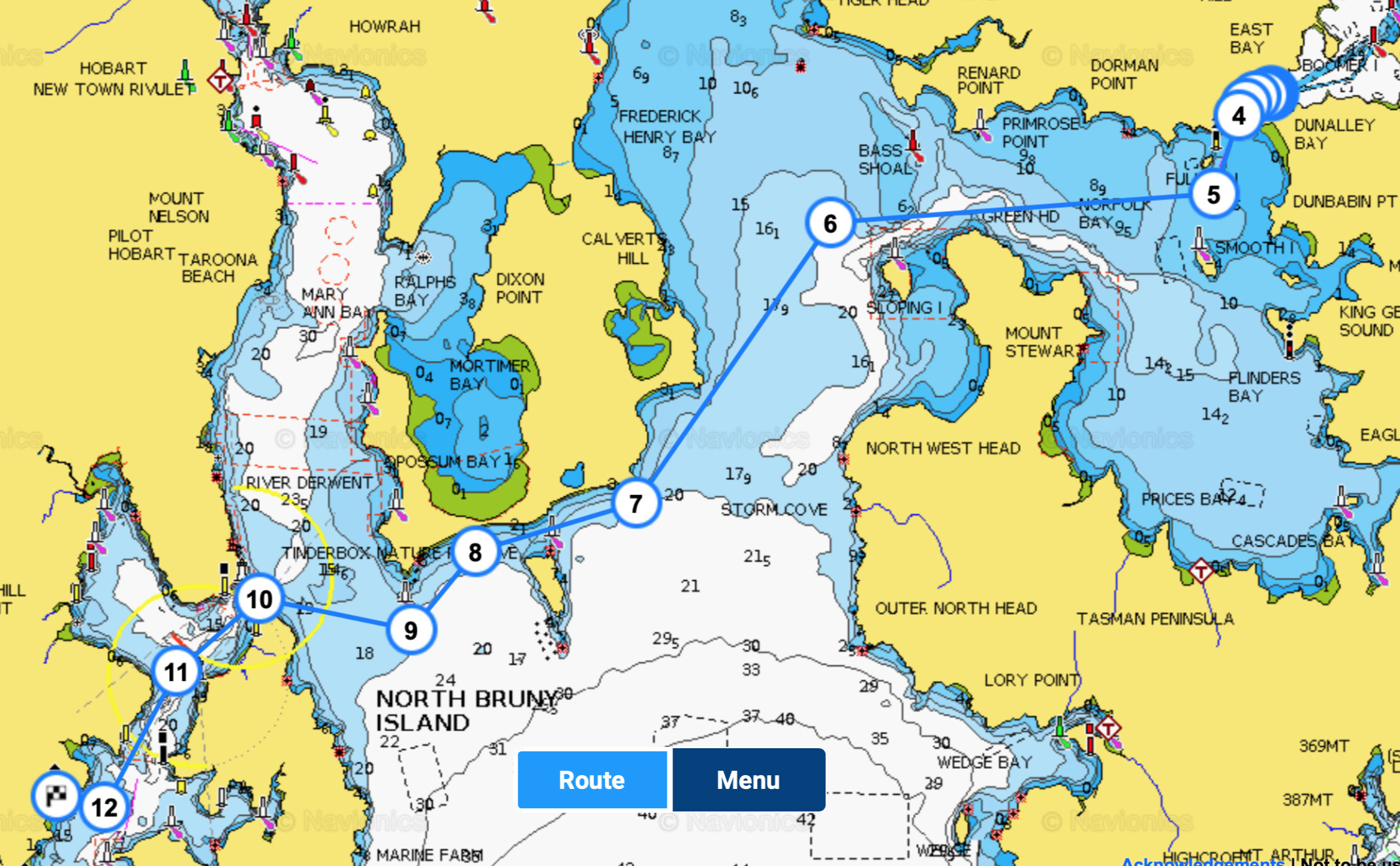
In March 2020 I sailed Our Tommy to Tasmania in search of new sailing grounds. The original plan was to sail north to the Whitsundays but the lure of the southern isle won out; Tasmania is so beautiful! I will stay for a year or so before heading north, hopefully via Tasmania’s rugged and wild western coast.
Click on the headings below to see more information and photos.
Preparation (February 2020)
Yvette and Ludvik, in Australia on a working holiday from the Chech Republic, joined me as crew two weeks prior to departure. They only had six weeks sailing experience in mild conditions in the Mediterranean but both were RYA qualified day skippers and experienced scuba divers. More importantly they were avid adventurers, young and very fit.
To learn the boat, and experience Bass Straight conditions, we spent 4 days cruising into Port Philip Bay staying at Queenscliff, Mornington & Sorrento before returning to Hastings for final provisioning.
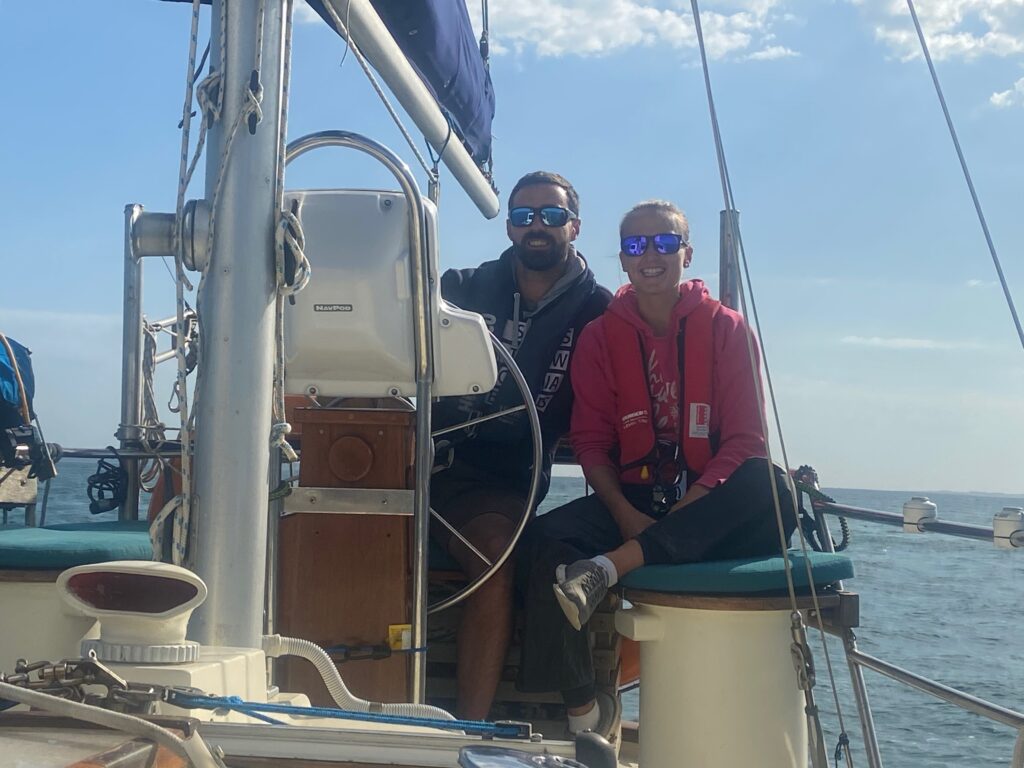
Hastings – Cleeland Bight (February 28)
Cleeland Bight provides a safe anchorage under the protection of Cape Woolamai on Phillip Island. There are 2 public moorings close to the beach in under 2 metres but I chose to anchor 200 metres south of these in 2.5 metres just behind a protecting sand bank. Refuge Cove is a 12 hour sail from there so a dawn departure is recommended.
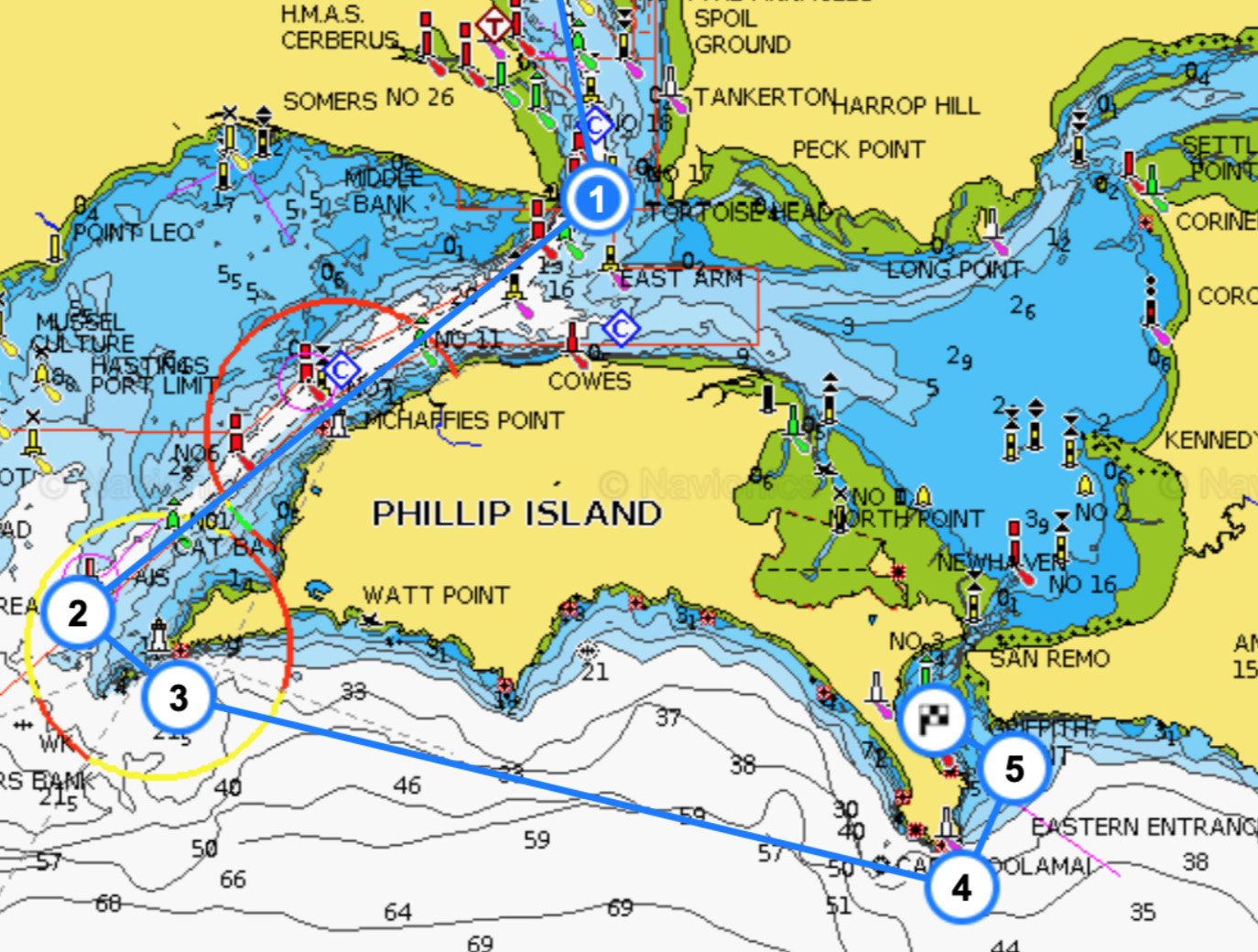
Cleeland Bight – Refuge Cove (March 1)
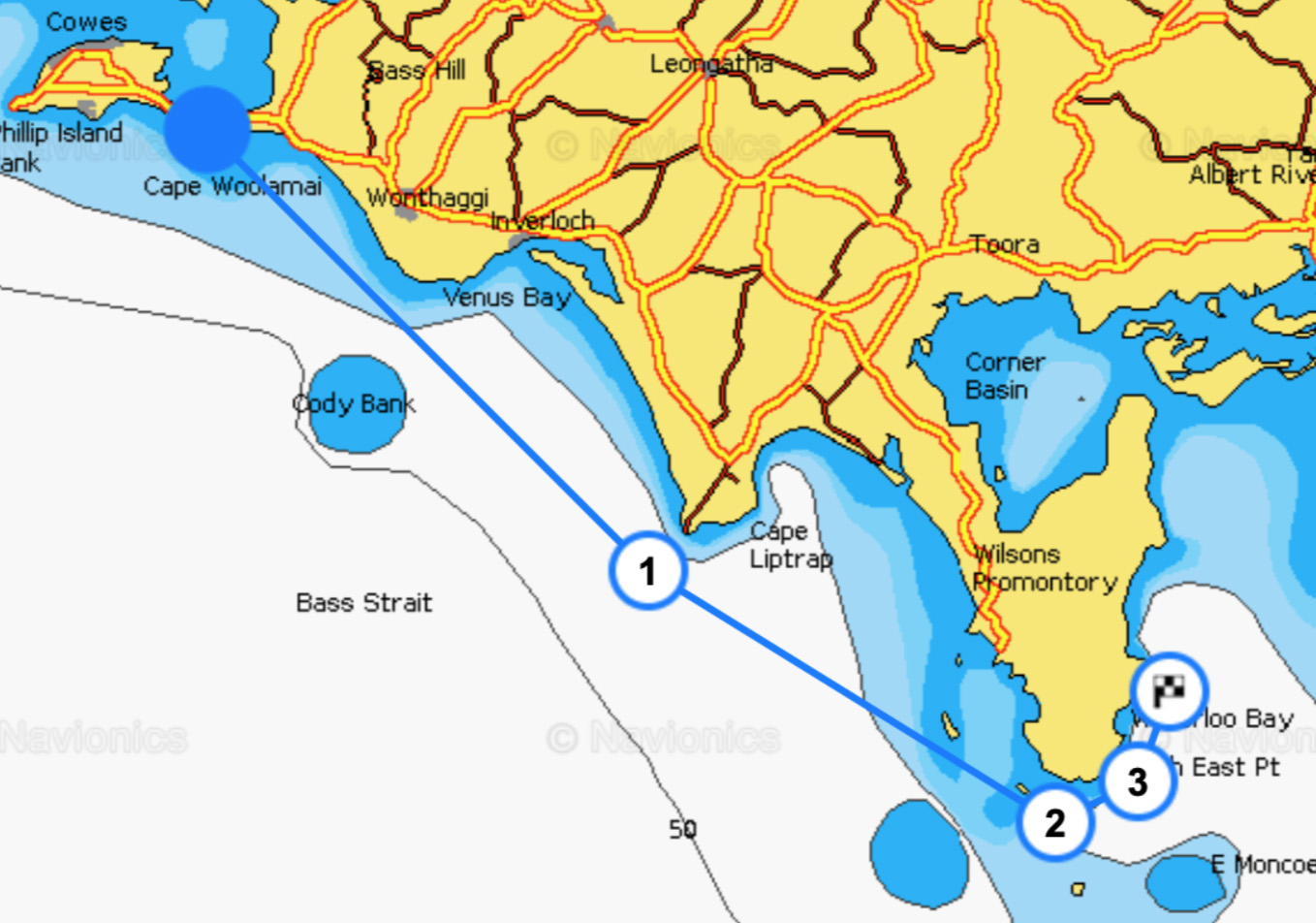
The SW winds were light but as forecast came up mid-morning and we made good speed to drop anchor in Refuge Cove just after 4pm.
We stayed two nights resting, bathing, sightseeing and fishing before heading off across Bass Straight to Flinders Island via Deal Island.
I met a cruising couple on the beach at Refuge and joined them for a drink on their 42′ yacht. They very kindly gave me some sea-sickness medication for Yvette who had been unable to shake off her sea-sickness when sailing in Bass straight’s heavy swell.
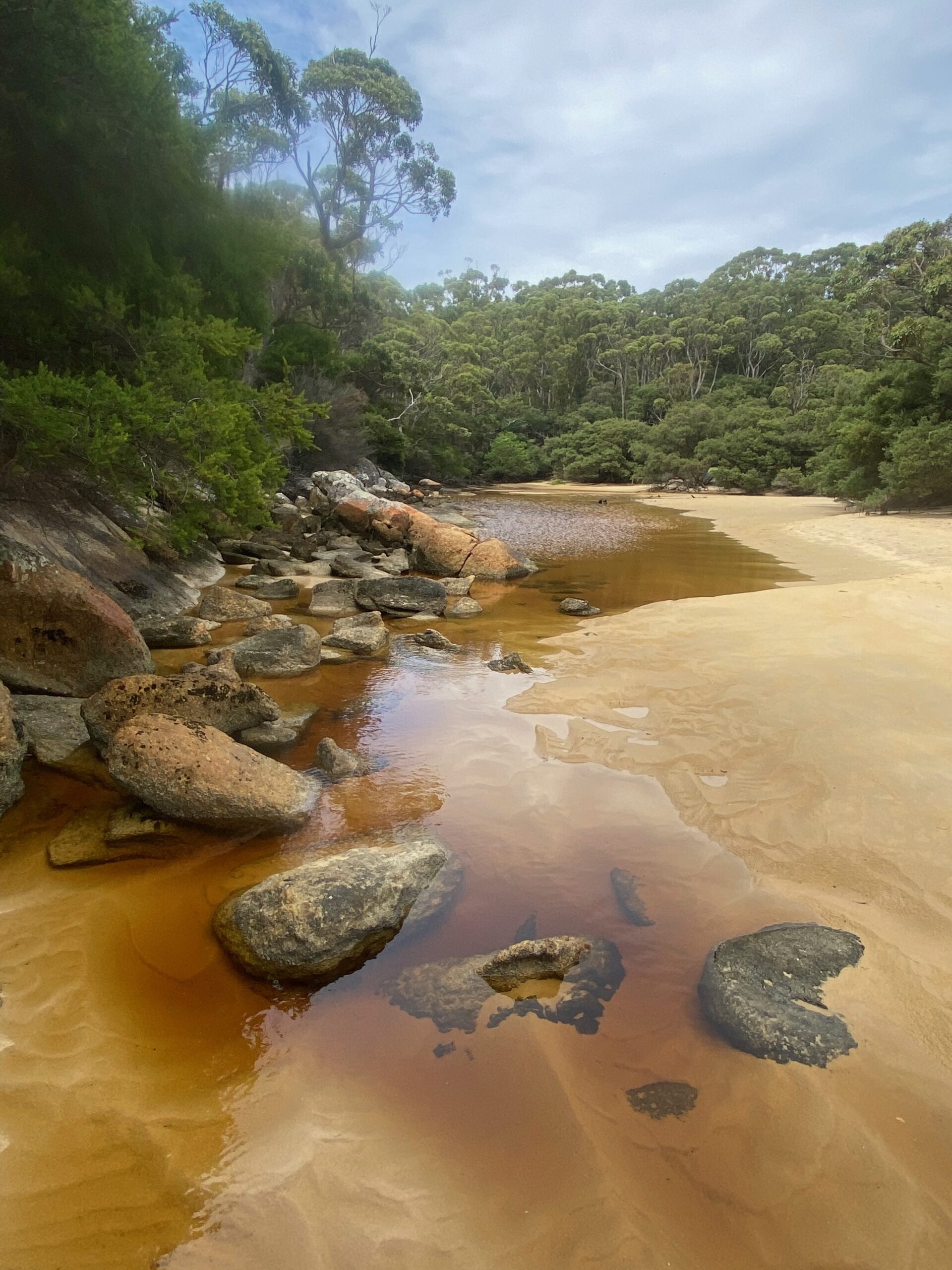
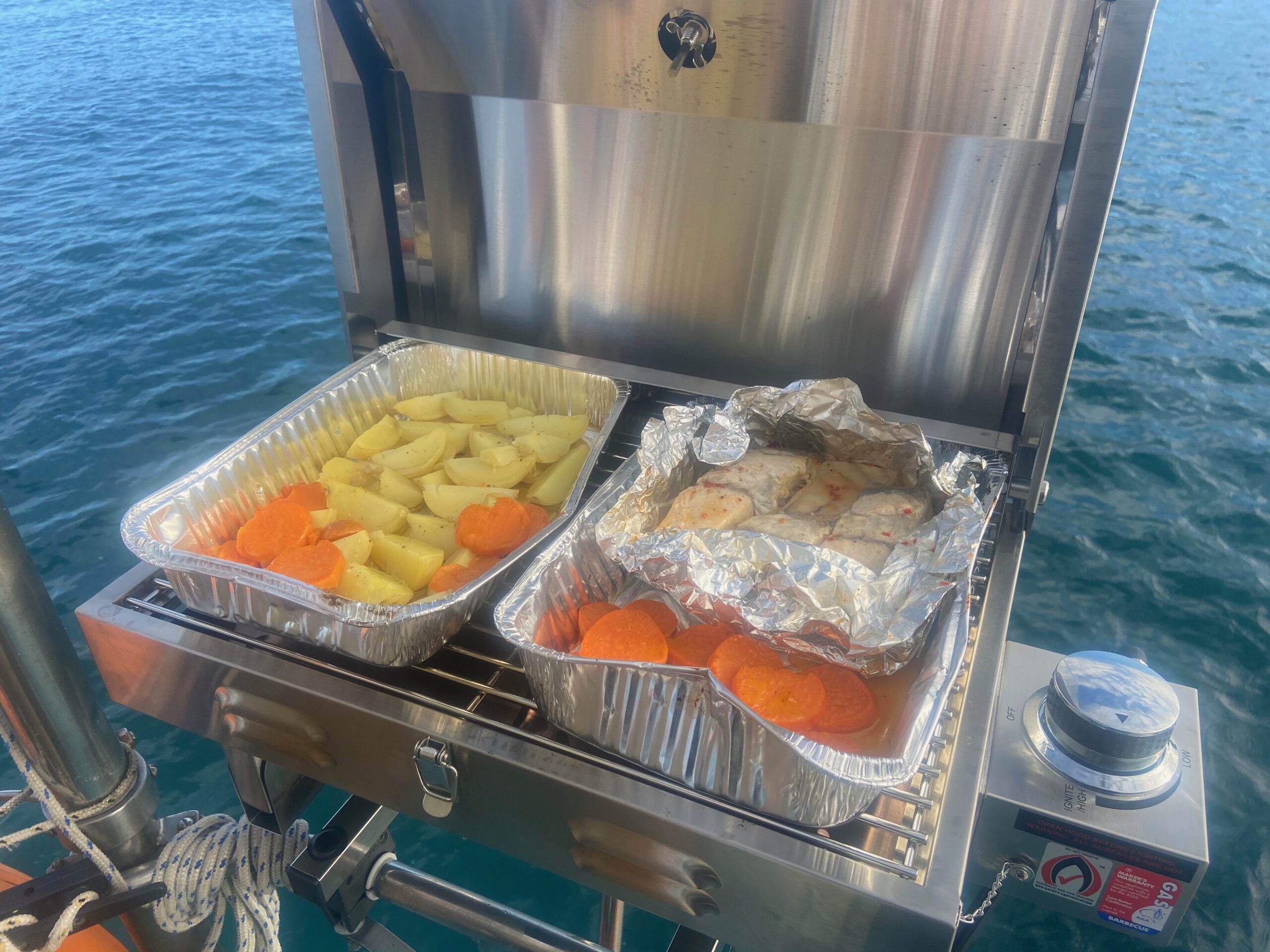
Refuge Cove – Deal island – Flinders Island – Clarke Is (March 3-5)
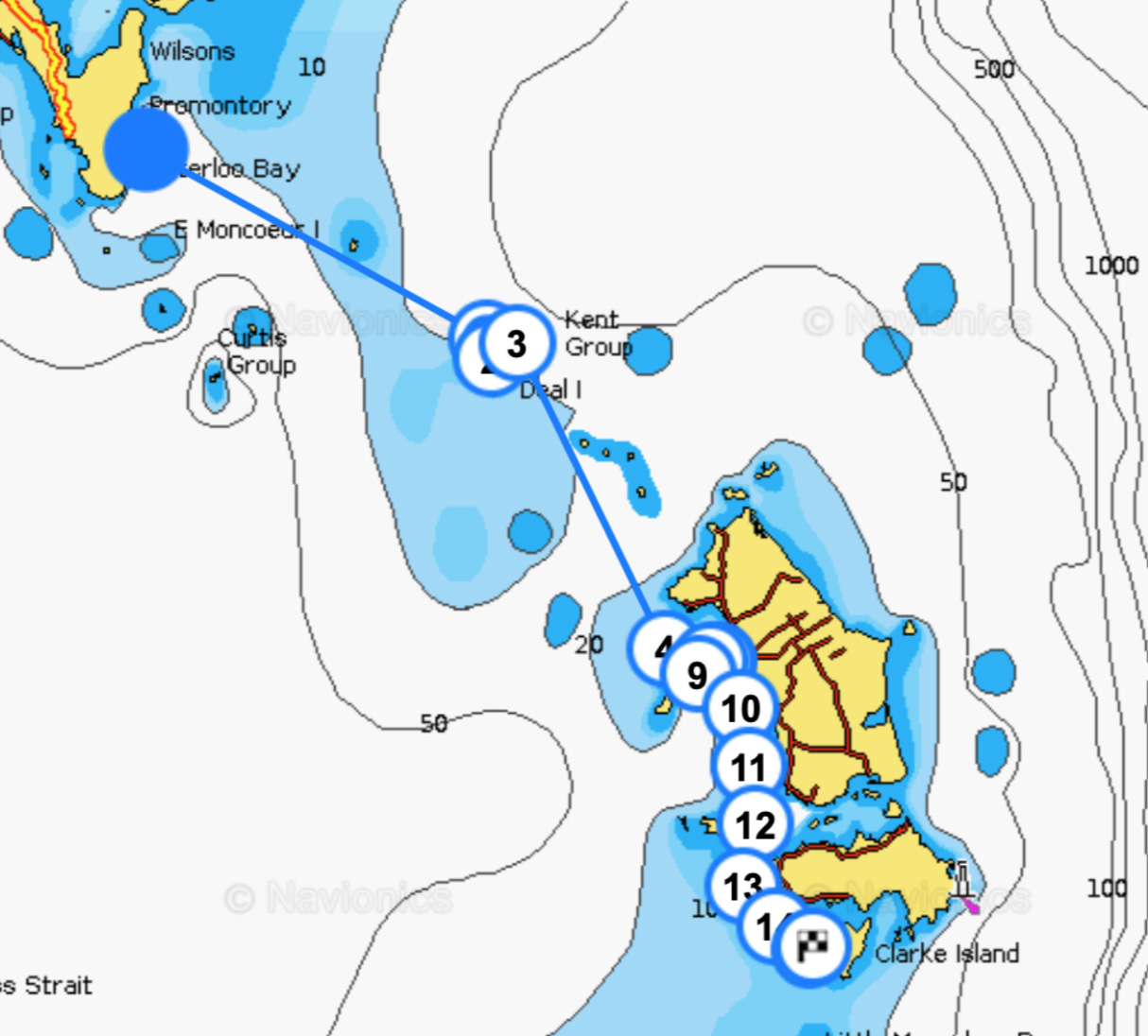
The forecast of a 25-30 knot SW winds made for an ideal crossing both days. Leaving from Refuge at dawn, Our Tommy made over 8 knots to Deal island and 7 knots to Flinders Island on the second day for a fast and safe Bass Straight crossing – my first!
It was windy, overcast and cold on Deal Island so we decided not to explore but press on to Flinders Island after sheltering in Garden Cove overnight. On arrival the changing easterly conditions suggested taking up a MAST mooring for an overnight stay in beautiful and secluded Port Davies (pictured).

The strong easterly winds moved us quickly south the next day. We knew heavy weather was forecast in a few days for Banks Straight so we decided to press on to Spike Cove in Clarke Island and hope for a favourable weather window the next day to cross over to Tasmania.
I kept in mind the old fisherman’s warning:
“So you have crossed big mean Bass Strait and think you are all done. But then you start going across Banks Strait and get a slap on the backside, just to remind you who is boss. Don’t relax too early!”
Clarke Is – Binalong Bay via St Helen’s Is (March 7-8)
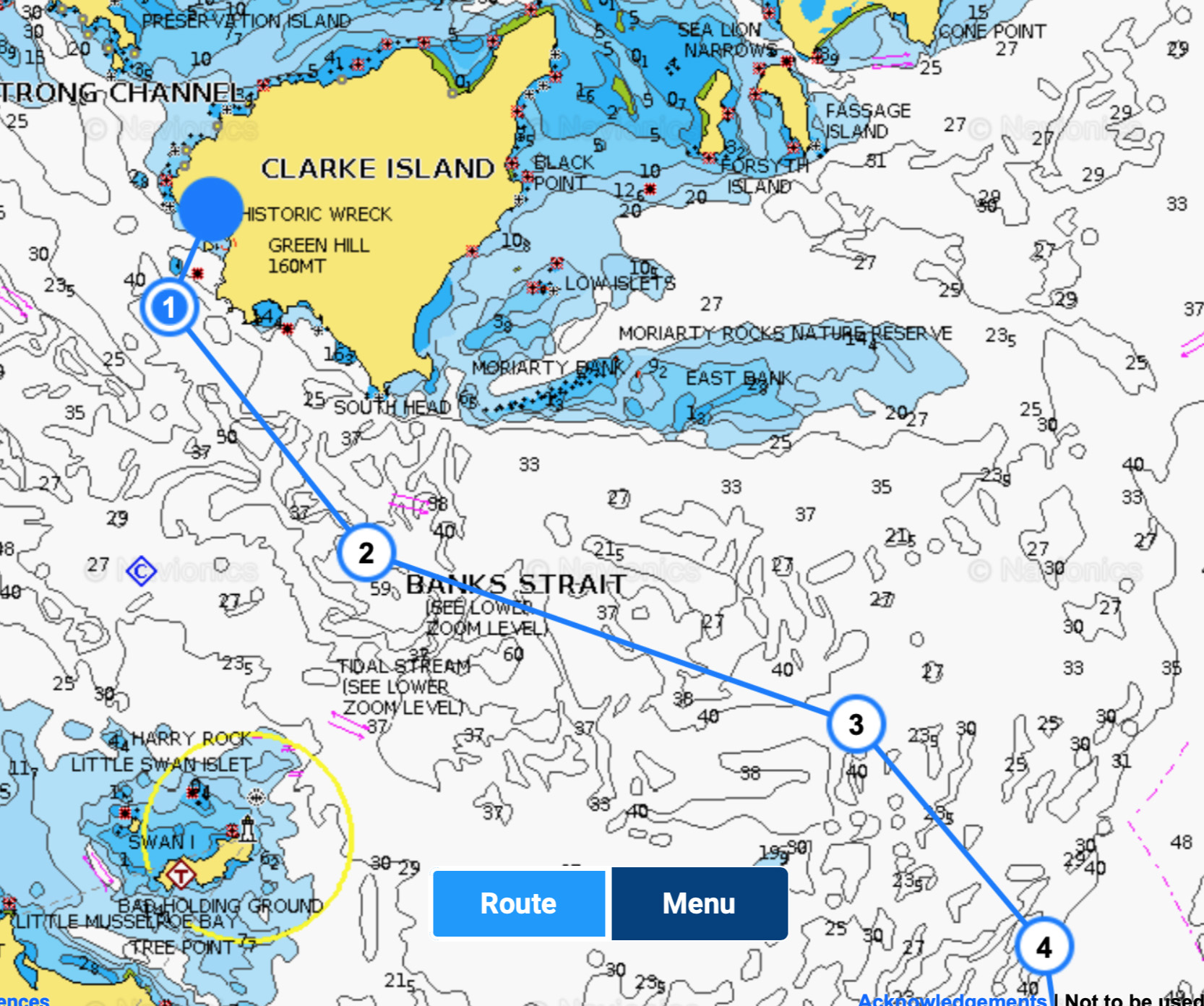
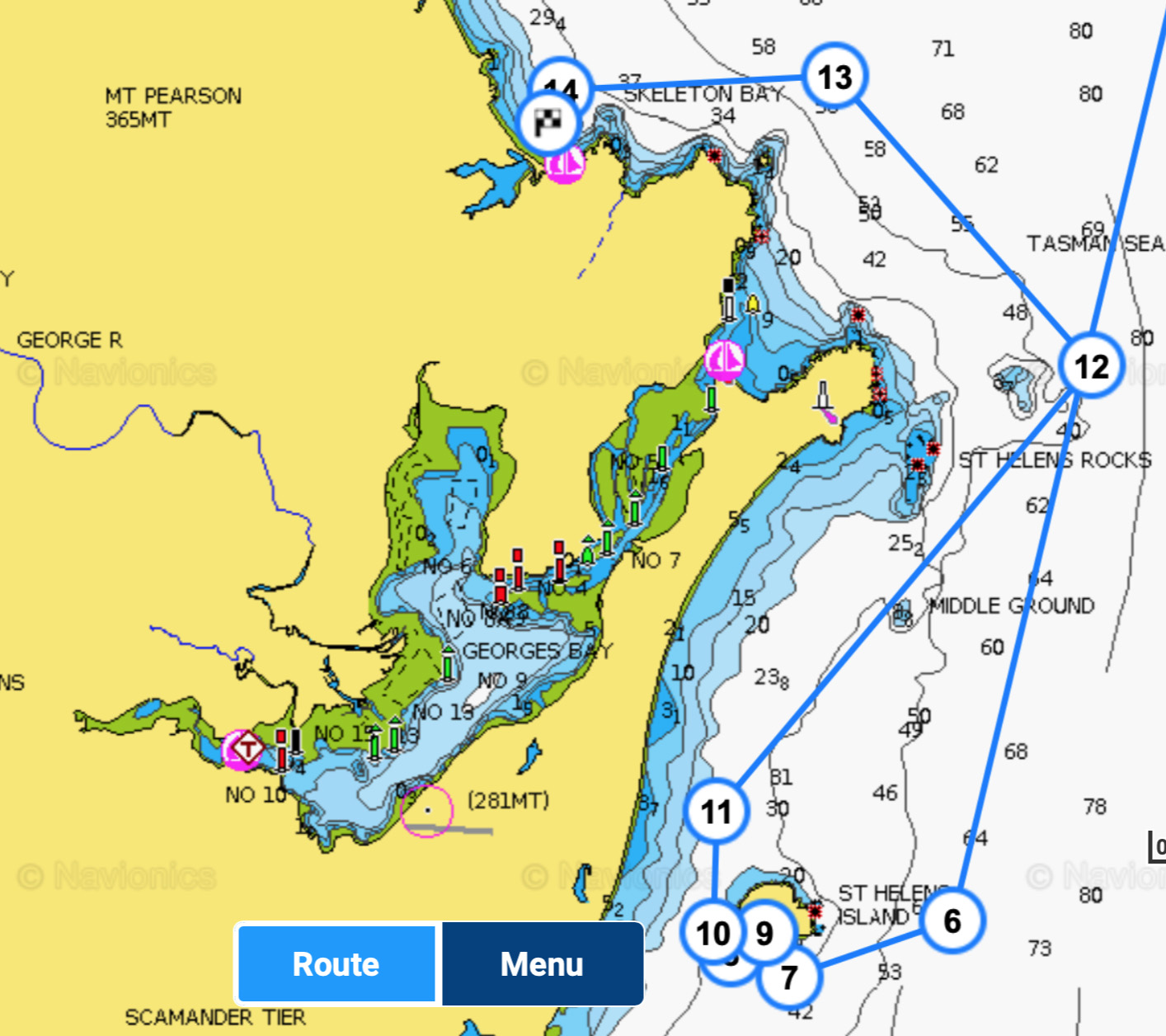
The weather forecast was for 20-25 knot NE winds all day. Leaving just before dawn gave us the tide assist in Banks Straight but as the wind quickly blew up to 30-35 knots (gusting to 40 knots!) the wind against tide conditions made for very large choppy seas and seriously uncomfortable conditions.
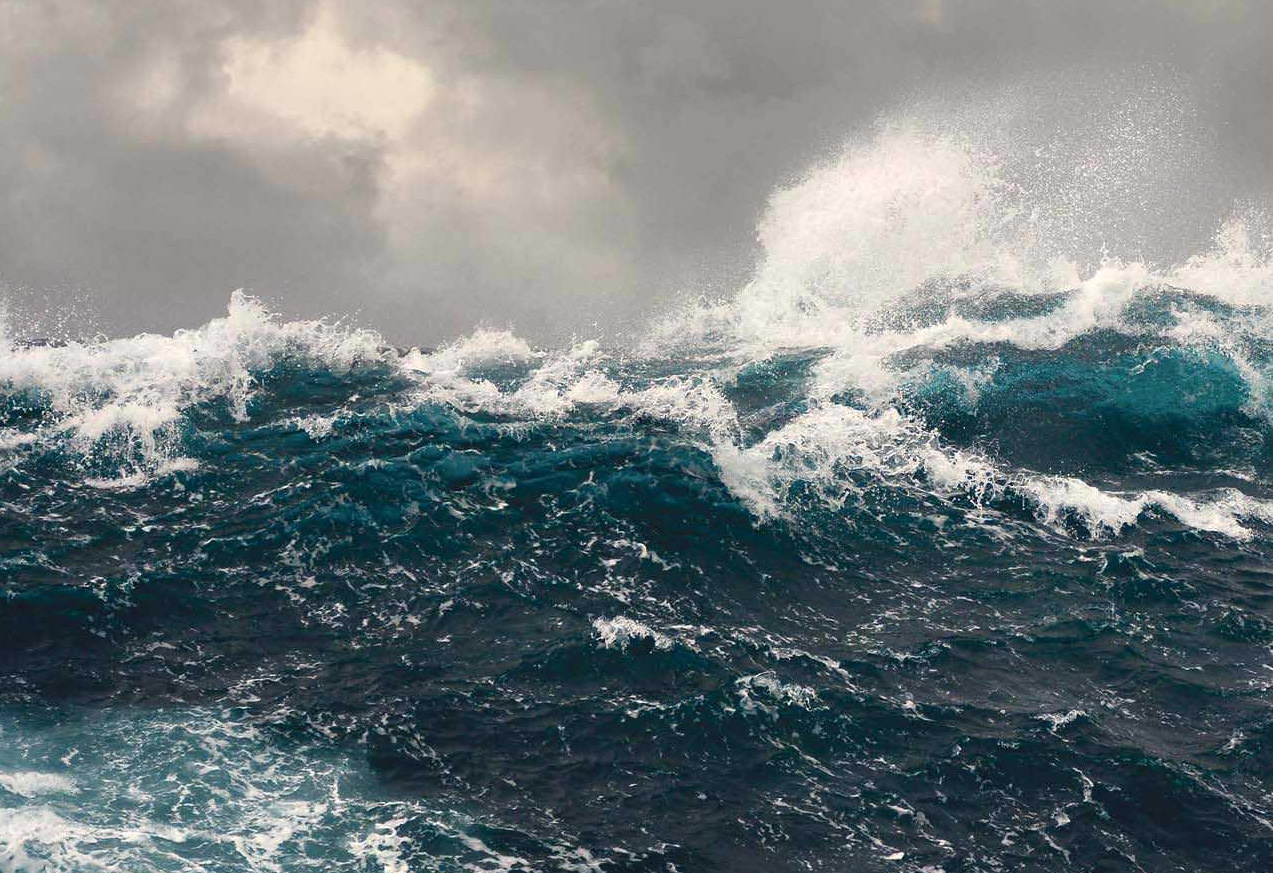
The crew were understandably fearful, never having experienced seas of this magnitude, but I knew that Our Tommy was built to survive much worse conditions. Nevertheless, holding course proved challenging but Ludvik’s strength and fitness allowed him to take the wheelhouse helm most of the day. When we finally turned southwards the following swells were well over 4 metres and constant attention to the course and helm were required.

Late in the afternoon, as we neared Binalong Bay and our intended MAST mooring, I realised the northerly conditions were not suitable for a bay exposed to the north. Instead we sailed on for two hours to our alternate anchorage behind small St Helen’s Island which provided us with a protection in 12 metres of water off a rocky shore. We dropped the hook at 8.30pm after 16 hours of arduous sailing. It wasn’t ideal but we were safe – and I carefully monitored the anchor overnight.
Binalong Bay – Wineglass Bay (March 9)
The strong northerlies had abated by the morning but the crew were unhappy with the sailing conditions and made their excuses so as to leave the boat as soon as we could sail to Binelong Bay. Yvette had been unable to shake her sea-sickness and had never become conditioned to big ocean swells.
By 10.30 am we picked up a MAST mooring at Binalong Bay and I ferried the crew ashore to catch a bus to the airport. They did a great job helping me across both Bass and Bank Straights but an unhappy crew does not make for a happy boat. It was good to be alone with Our Tommy.

I stayed three nights in the bay just near the township of St Helens. I tried to no avail to get apilot to guide me through the river bar into town but in the end a friend-of-a-friend who lives in St Helen’s picked me up at the boat ramp (picture below) and drove me into town for supplies.
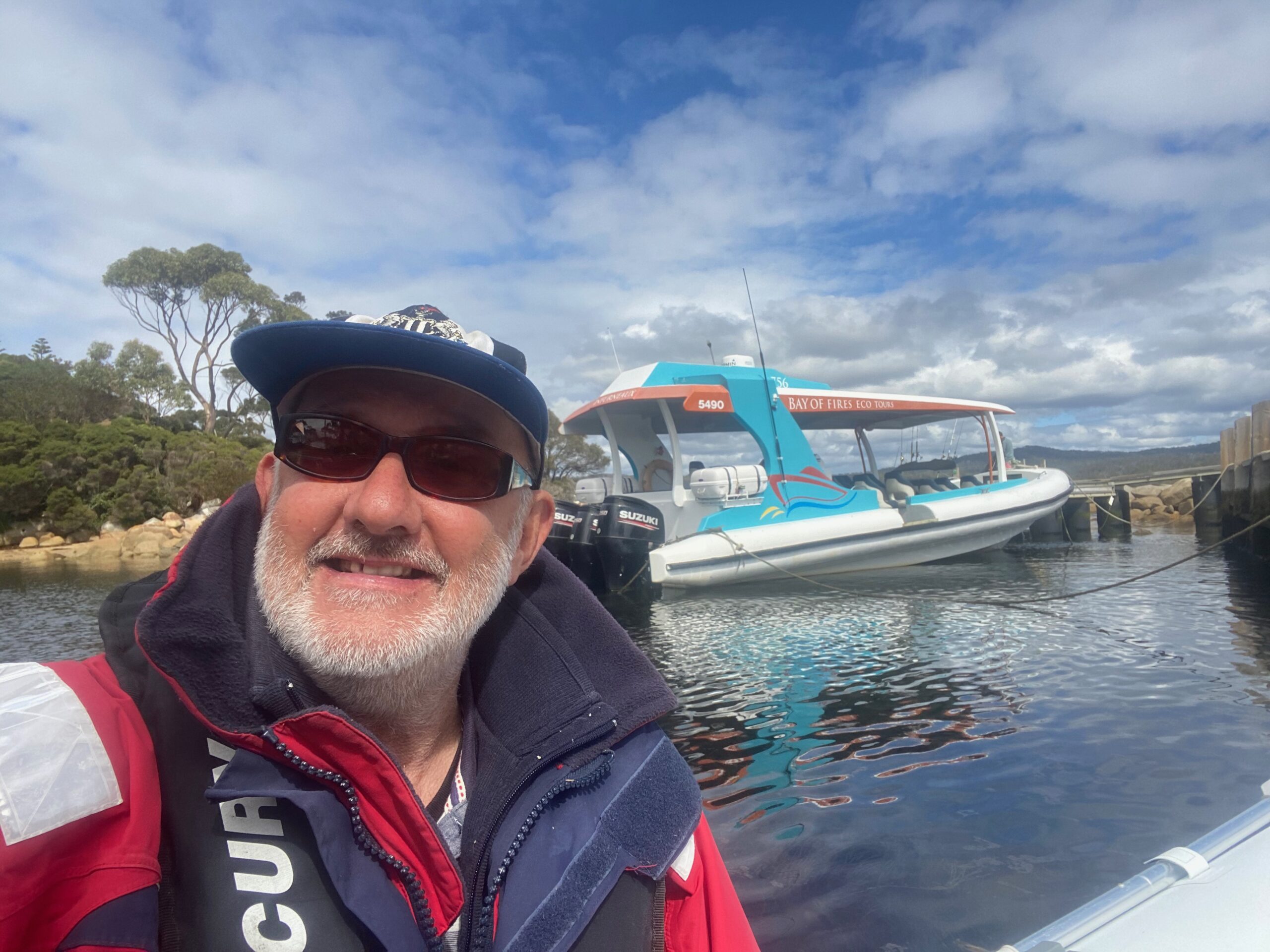
Having never done it before, I was nervous about single-handing Our Tommy but after a few days the winds abated and I motored south to the protection of magnificent Wineglass Bay.
Wineglass Bay is a stunning as everyone says it is, although I’d take Refuge Cove any day. That evening I felt pleased that I had successfully single-handed Our Tommy for the first time.
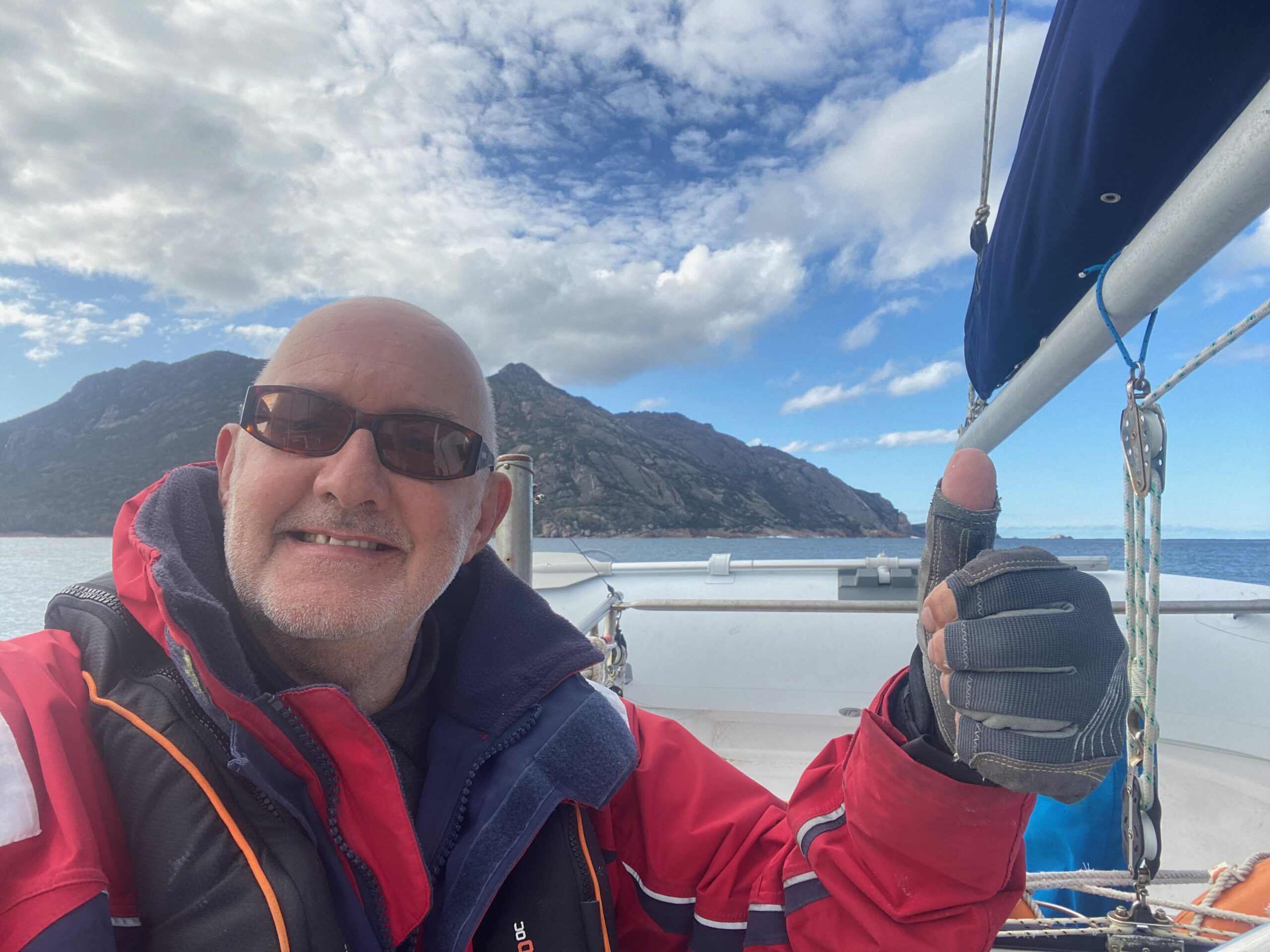
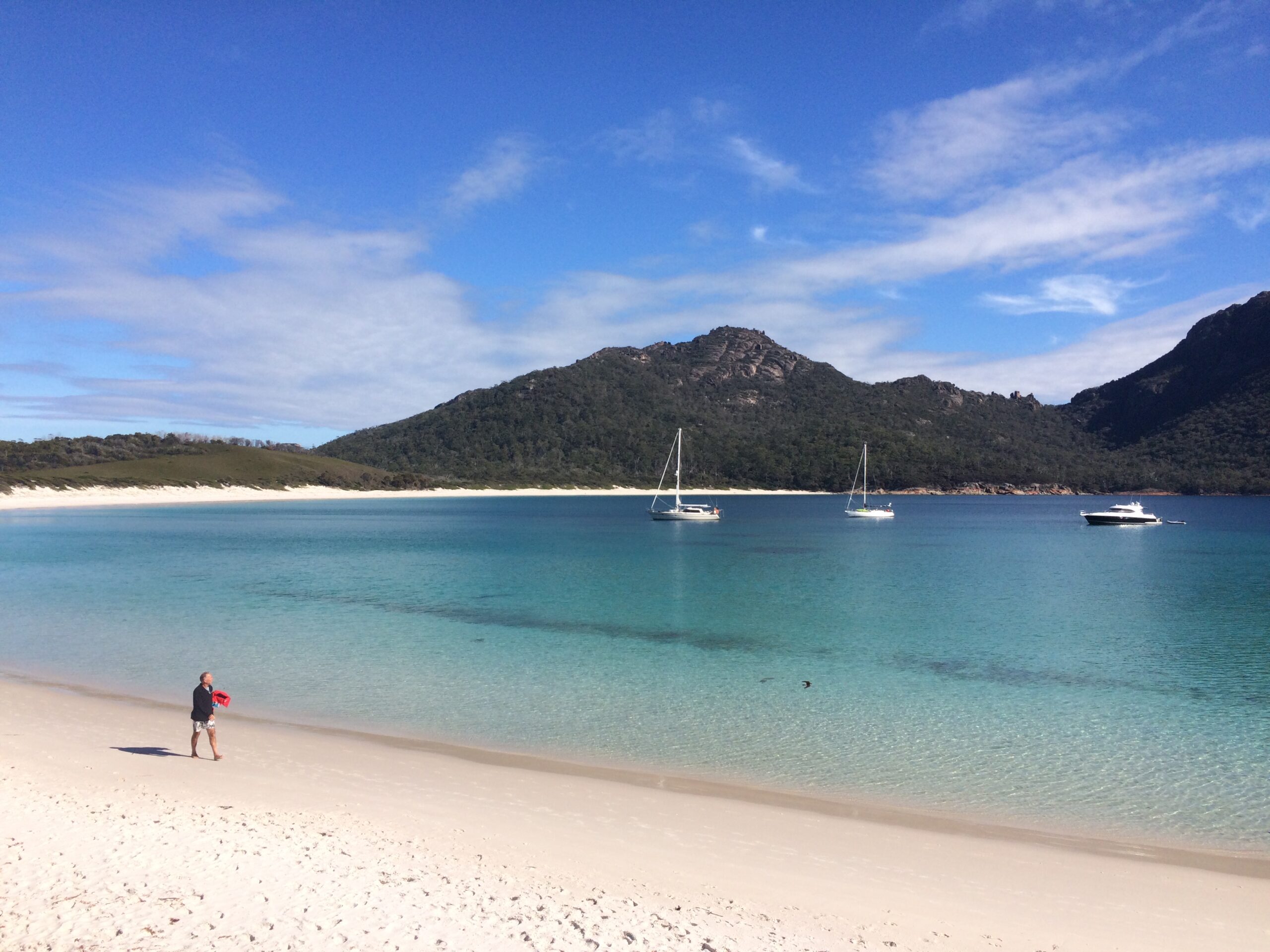
Photo of Wineglass Bay anchorage courtesy of MAST Tasmania.
Wineglass Bay – Maria Island (March 12)
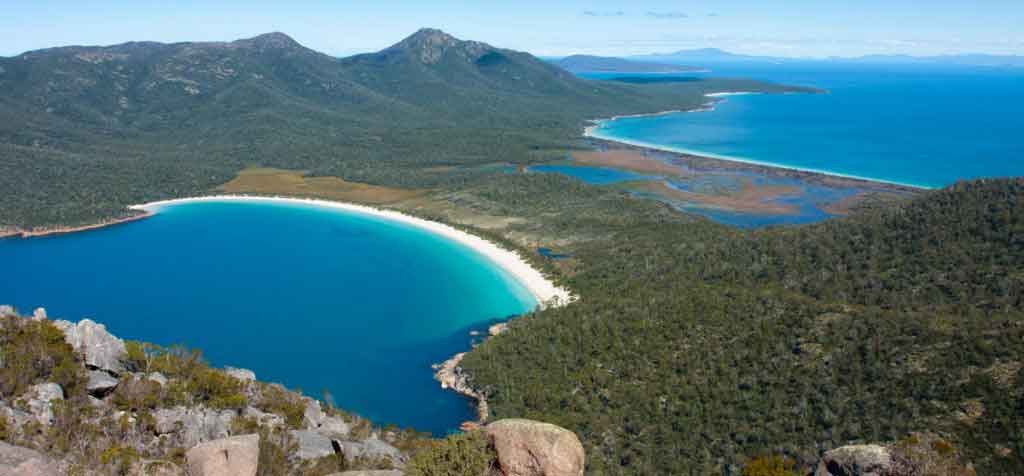
After Wineglass Bay I said farewell to the heavy Tasman Sea and found shelter behind the Schouten Passage.
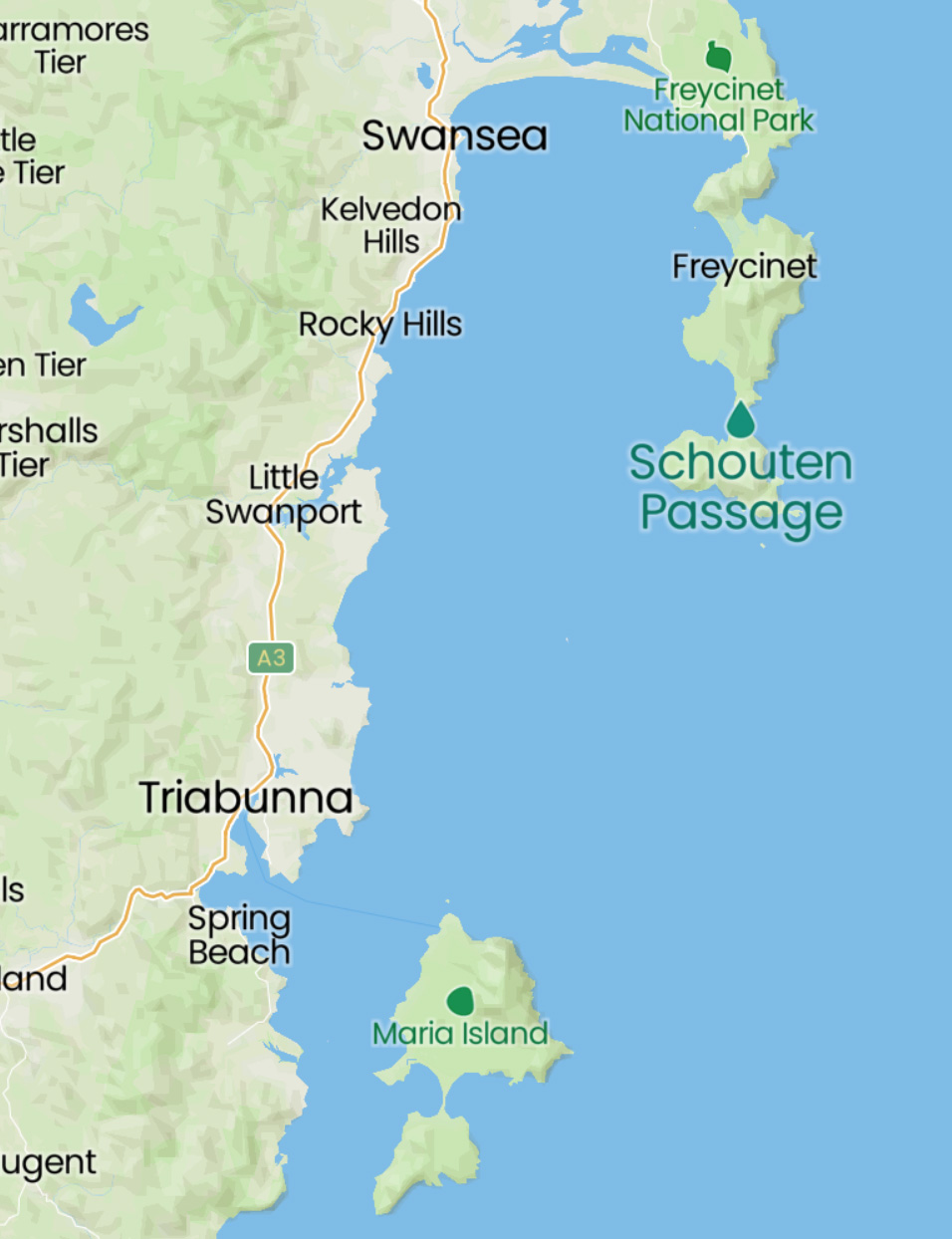
My destination was Maria Island, a lazy day-sail beyond the Shouten Passage just south of Wineglass Bay. I was also looking forward to sharing an anchorage with Rich Cowling and Michele Sly who were sailing north from Kettering, and who were renting me their berth at Oyster Cove Marina.
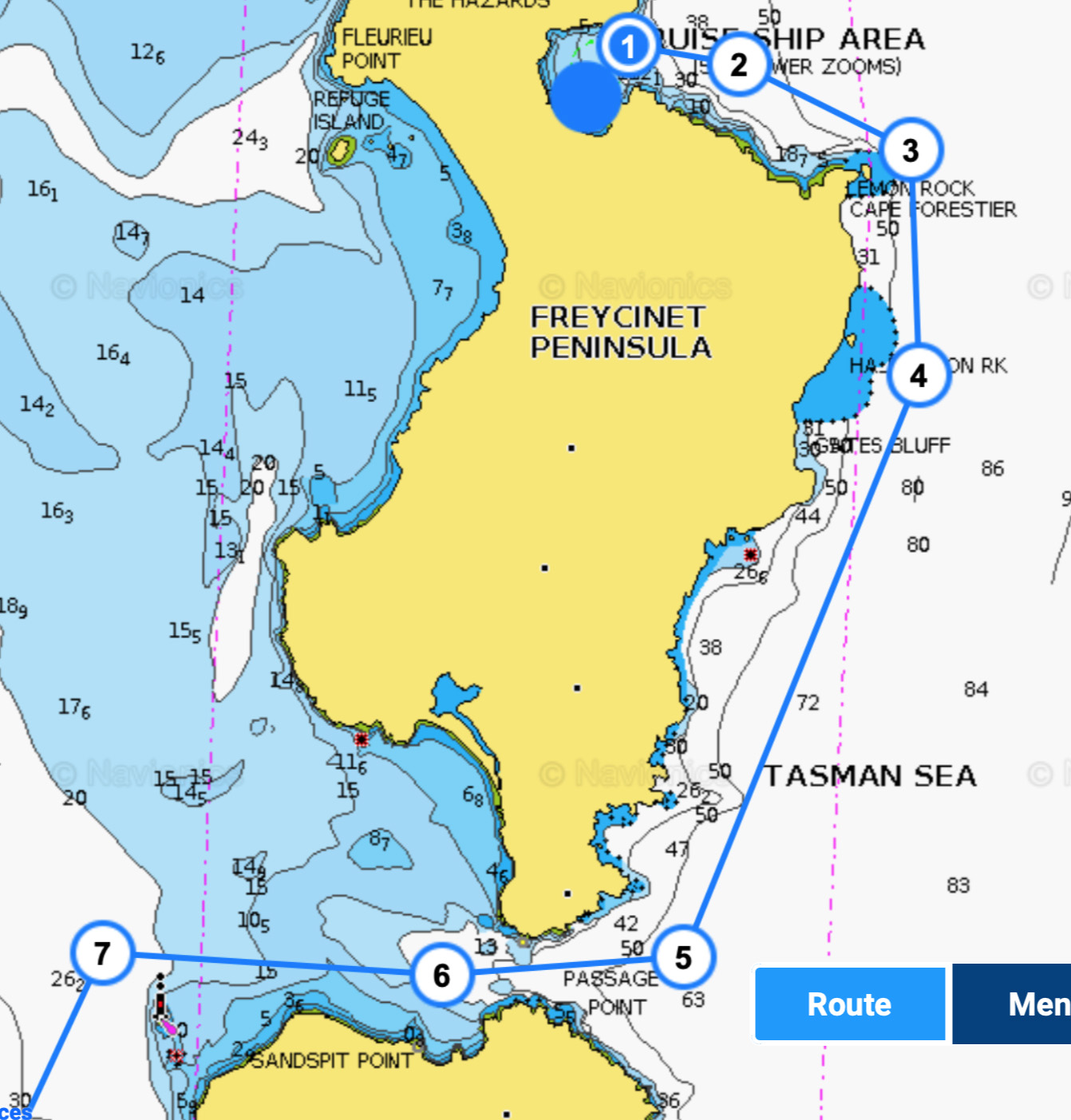

I made VHF radio contact with Michele a few hours north of Maria Island and we agreed that an anchorage in Chinaman’s Bay in the north of Shoal Bay was best for the conditions. It was as flat as a pancake and our boats barely moved that night.
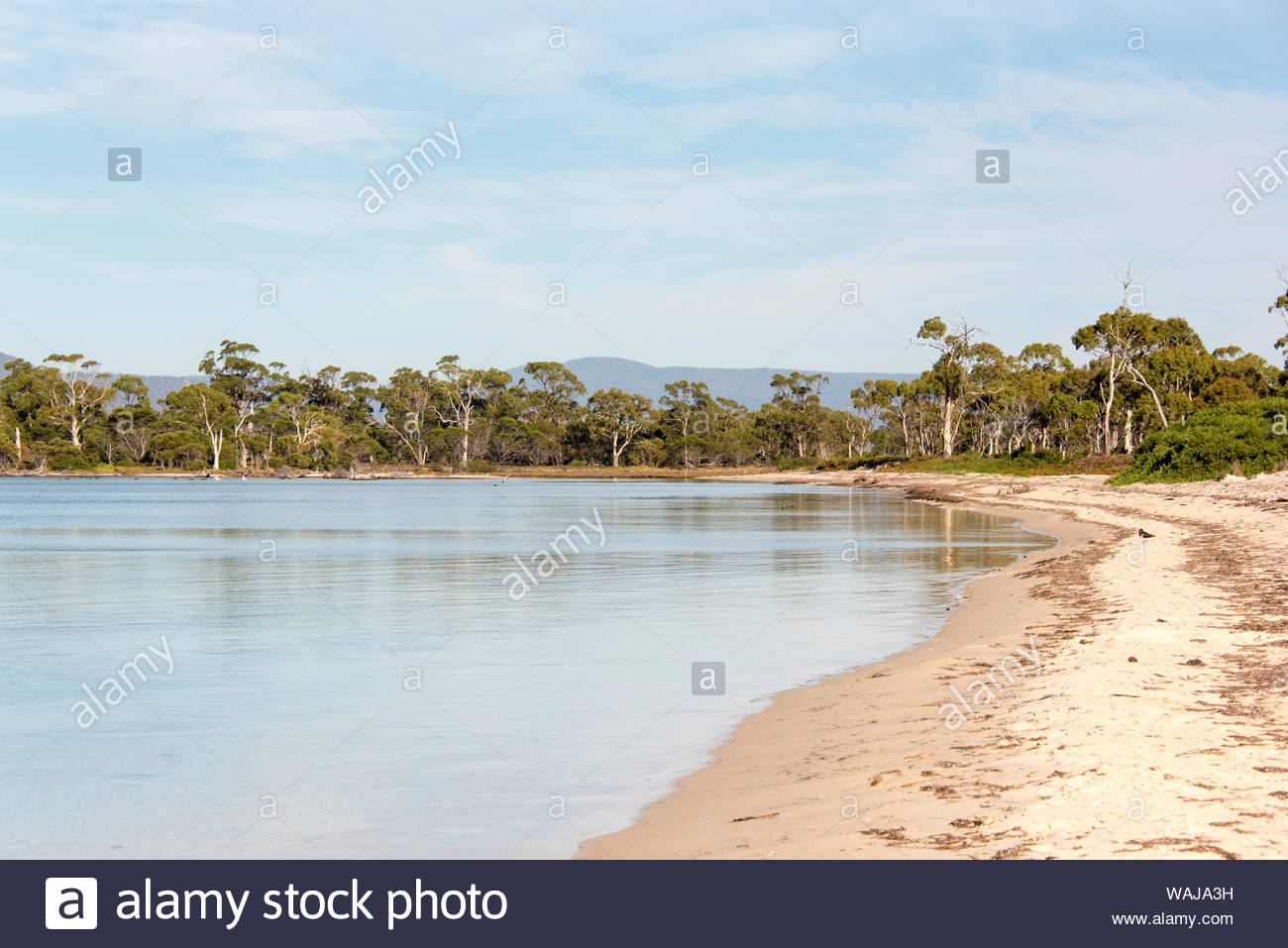
Maria Island – Dunalley/Denison Canal – Kettering (March 13-14)
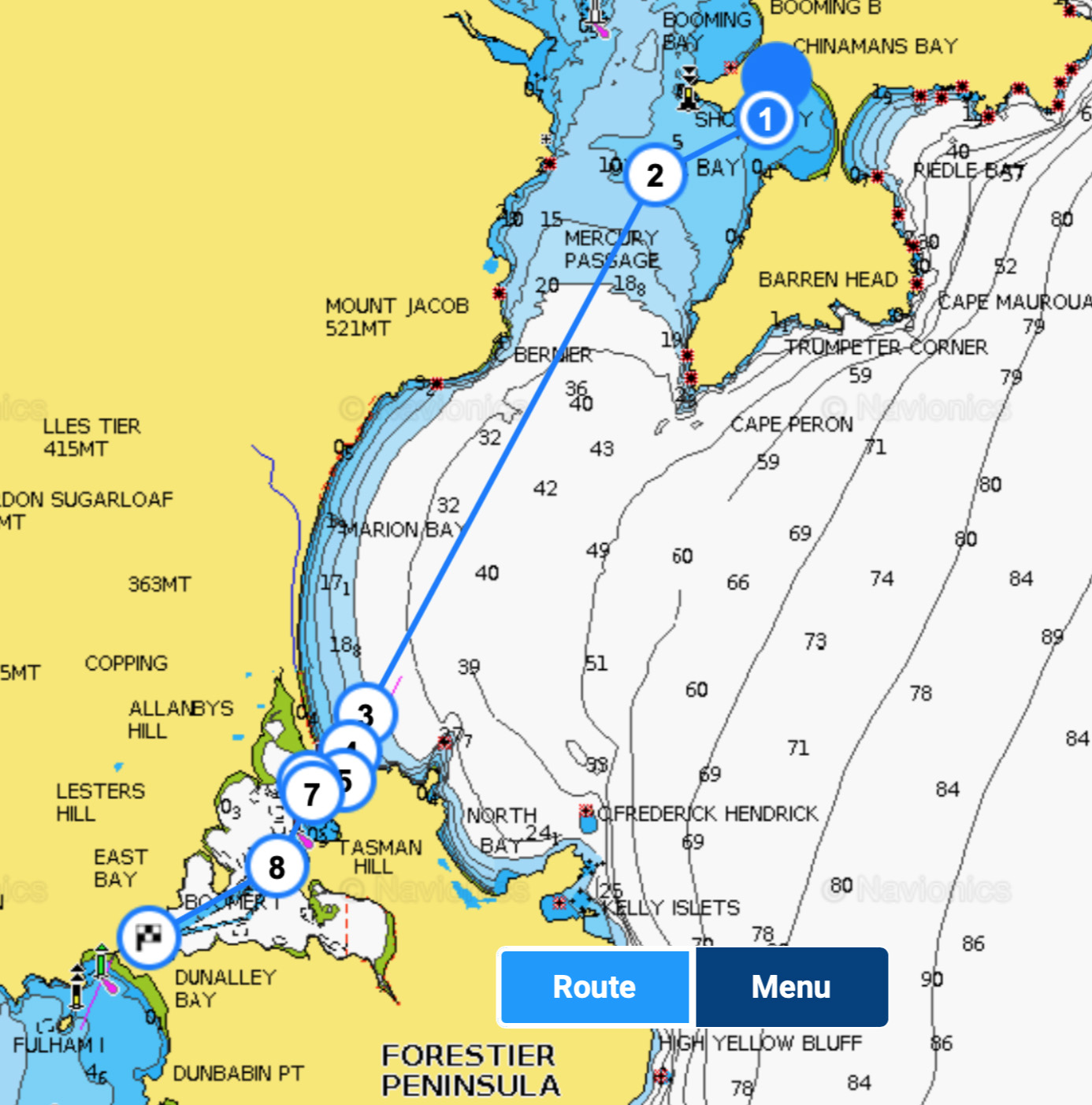
Fifteen days after leaving home and this is the home straight – just a half day-sail to Dunalley and the northern end of the Denison Canal. The MAST information for Denison Canal, especially the accurate and downloadable up-to-date routes are an essential study – I would NOT navigate these shallow waters without their routes installed on my chartplotter.
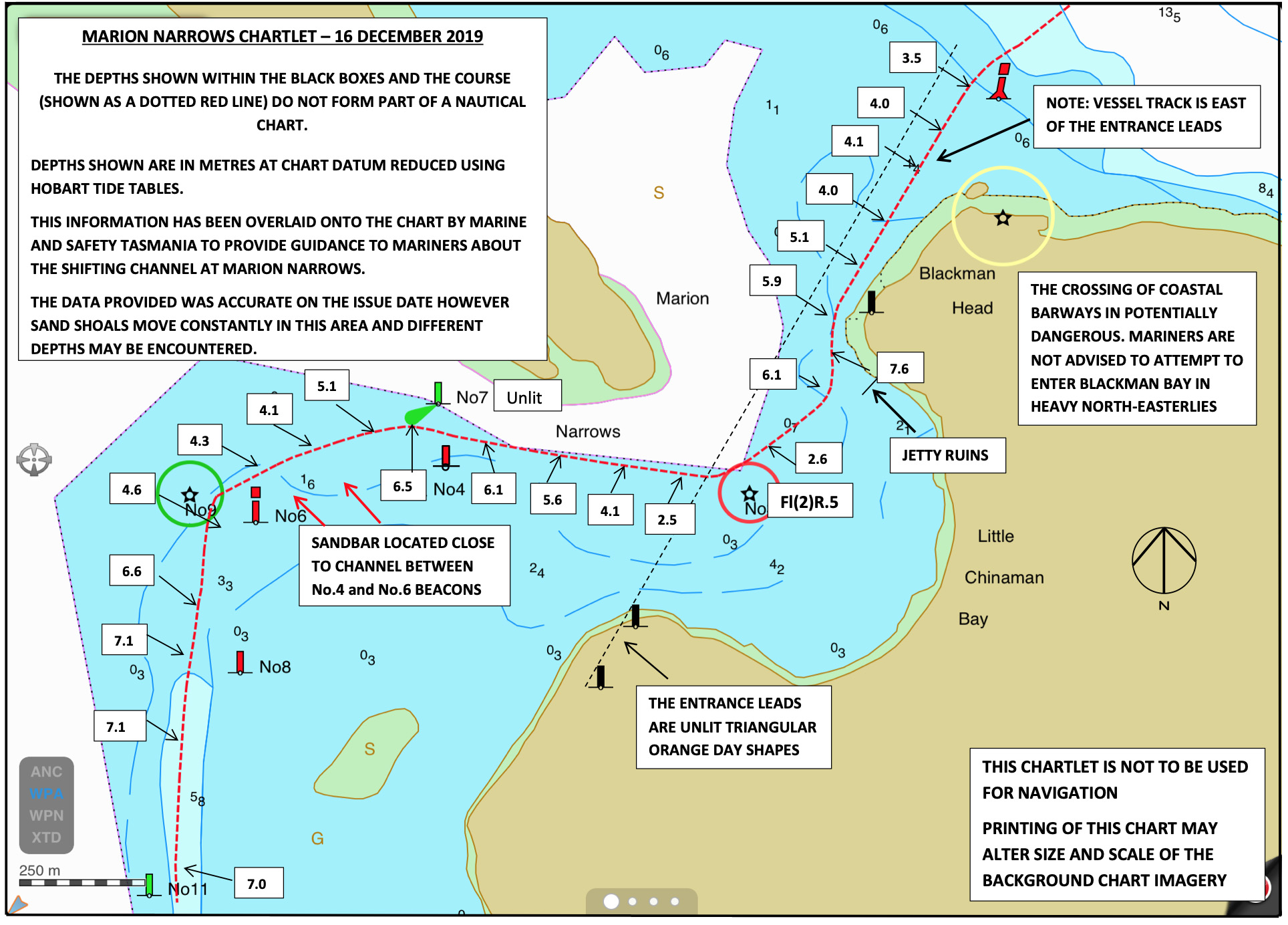
Then, after overnighting on a MAST mooring at Dunalley I waited for my 11am pre-arranged transit of the canal before an easy half day-sail to our new home in the Oyster Bay Marina in Kettering – Cheers!
